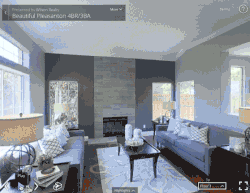Although you might not be conscious of certain non-verbal cues or messages that you send out, they can (and will) make or break a chance with a potential client. Improving not only how you read non-verbal communication cues, but also improving how YOU deliver them can hugely impact how a sale can go, whether or not you obtain new clients or even lose clients. Gestures, eye contact, facial expressions, haptics, proximity, vocalics and the choice of clothing you might wear are all key non-verbal communication characteristics to be aware of when trying to present yourself to a prospective client or anyone you come into contact with.
In regards to gestures, it is important to remember that they vary depending on cultures. Some hand gestures such as the “thumbs up” can have numerous meanings. In America and a few other countries, the thumbs up is an expressive hand gesture that suggests a positive intention, while in other countries it can express a negative connotation. When communicating with clients that are of different backgrounds and are maybe new to the area or even the country, stay away with using hand gestures of any kind. Your words will be more powerful, formal and will help to eliminate any confusion that might otherwise occur with a hand gesture.
Just as important as the significance hand gestures can carry is the idea of using proper eye contact, which communicates respect and also establishes authority if done correctly. When too much eye contact is used, clients can begin to feel uncomfortable, put off and even interrogated. When interacting with clients, always make them feel at ease – make sure that your eye contact is, simply put, not too intense. Don’t appear nervous, either; make sure your eye contact is consistent and that you appear confident without being controlling. Make sure that when you’re speaking with, you do not look away when either you or they are talking. You should always appear extremely interested in what they are saying, and if you are always looking away, they will think that you are being disrespectful by not paying attention to their every word. Your client needs to trust that you are keyed into what they are saying and are a professional; if they are speaking with you and you are not keeping eye contact with them, it can be viewed as unprofessional or even rude. You want your client to trust you and if they feel as though you are saying one thing, but your body language and eye contact are saying something else, then they could view you as not disingenuous or even dishonest.
Using touch (haptics) in an appropriate way can be very effective in building lasting relationships with clients. A handshake is a polite, welcoming gesture that is friendly and professional. A sense of touch can have substantial variability based upon the amount of touch, location, and type of touch. In some cultures, a kiss on both cheeks is equivalent to a handshake here in the U.S. If a client goes to kiss you on both cheeks, do not take that offensively, for it is a polite sign of welcoming in their culture. It is also important to take age, culture, gender, and religion into account when working with other realtors and meeting potential clients. The appropriate amount of touch is significant, but having the appropriate amount of proximity when talking to people is just as essential. The appropriate social distance in which to talk to people at is between 4 and 8 feet; you never want to make someone feel uncomfortable by entering into their personal space. However, in some cultures it is appropriate to stand extremely close to someone while talking. If a client is talking to you and you feel uncomfortable, do not take offense, simply notice if there is a cultural or age difference. Some elderly people might stand closer to you based upon the fact that they cannot hear very well. Noticing your client’s non-verbal cues as well as your own can help to interpret the situation and then decipher what the best way to appeal to your client would be.
A crucial part of connecting with a client is to be able to stay positive and upbeat continuously. Facial expressions can give away a lot about how a client is feeling about a certain home that they saw, or how they feel about working with you. If your facial expressions show excitement, your client will react based upon what they see and they, too, will subconsciously feel more excited — the same goes for negative emotions. Having a positive demeanor and the ability to smile regardless of the situation is of the utmost importance, as your client will always be reading you. Yawns aren’t the only contagious facial expression, smiling is very contagious and can help the relationship between you and your client immensely.
One’s wardrobe choices in professional situations says a lot about a person. Working in real estate means that you are constantly working with people and should always be dressed in a professional manner. Dressing too casually will result in clients not taking you seriously; you need to maintain the perfect balance of professionalism and be someone that your clientele feels comfortable around. Subconsciously or even consciously, people often judge others and stereotype them based upon how they look and what they wear. Making sure your hair is styled and brushed, your outfit is appropriate and clean, and your hygiene is maintained are all equally as important as what you say.
Always making your clients feel important and taken care of are both paramount when selling a house or pitching yourself to a potential client. Always keep in mind the cultural or age differences that can change the meaning of non-verbal cues and to never be ethnocentric when communicating with clients. Just by staying conscious of the above, all very telling, characteristics of non-verbal communication, you are already on your way to being a more successful and effective realtor.











